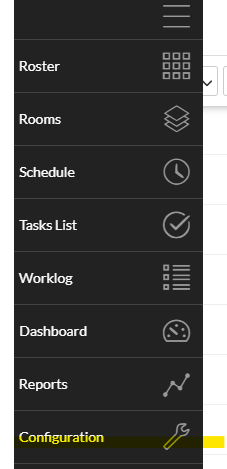Please see below a step-by-step process on how to run and read the Cleaning History Report
The cleaning History Report can become a very valuable tool in providing you important and actionable insight of your operation, without having to do the work yourself. As long as your team is using Optii correctly (Start/pause jobs as needed), it will gather all of the information from the activities performed by the user. Meaning, Optii will tell you how long your RA takes to clean a room vs. How long it's expected and provide a the variance. The same thought process applies to your supervisors - How long it takes them to flip a room from VC to VI versus how long it should take them based on your standards on inspection times.
You can pull this information by day, week, month or year. You will also be able to be a specific as to run this report for a particular line RA or Supervisor and filter by floor, section, room and even add constrictions such as 'Room cleaned less than' or 'Room Exceeds Scheduled Time by'
Please see below a step-by-step below on how to run this report:
- Hover to the tool bar and click on 'Reports'

- Next you will want to click on 'cleaning History Reports'

- View the whole team or view by specific team members (RA's/Inspectors)
- View by Tower/Section/Floors/Room Number
- Choose specific cleaning times - Cleans Less Than or Exceeds Scheduled Time by
- You can also choose to view notes left by the supervisors during the inspection

Once you click on 'Refresh Report' it will provide you with all of the KPI's you need to understand your team's performance:
Cleaning Summary KPI's
These key performance indicators (KPIs) are commonly used in the hotel to assess the efficiency and productivity of room attendants in cleaning hotel rooms. Here are explanations for each of these KPIs:

- Actual Cleaning Net Times for Room Attendants: refers to the total time spent by room attendants in cleaning hotel rooms after accounting for breaks, rest periods, and other non-productive time. It accurately measures how efficiently room attendants are utilizing their working hours for cleaning tasks.
- Average Cleaning Duration Departure: this KPI represents the average time it takes for a room attendant to clean and prepare a hotel room for a guest who has checked out (departure). It reflects the efficiency and speed with which room attendants can turn over rooms for new guests.
- Average Cleaning Duration Stayover: it measures the average time it takes for a room attendant to service and refresh a hotel room where the guest is staying over (stayover). Stayover cleaning typically involves tidying up, replenishing amenities, and making the bed. A lower average cleaning duration for stay overs suggests that room attendants can efficiently maintain the cleanliness of rooms with minimal disruption to guests.
- Average Cleaning Times Touch-Up: the average time required for room attendants to perform "touch-up" cleaning tasks in a hotel room. Touch-up cleaning involves quickly addressing minor cleanliness issues, like replacing towels or emptying trash bins. A lower average cleaning time for touch-ups indicates the efficiency of maintaining room cleanliness without a full cleaning.
- Average Cleaning Times Corrections: measures the average time room attendants spend making corrections or rectifying any cleaning deficiencies in hotel rooms. It includes addressing issues identified during inspections or guest complaints. A lower average cleaning time for corrections suggests effective problem resolution and guest satisfaction.
- Average Cleaning Times Turndown: represents the average time required for room attendants to perform turndown service in the evening. Turndown service involves preparing the room for the guest's return, which typically includes turning down the bed, leaving chocolates, and ensuring a welcoming atmosphere. A lower average cleaning time for turndown indicates efficient service delivery.
In summary, the Cleaning KPIs in Optii help hotel management monitor and optimize the performance of room attendants by tracking their cleaning times, efficiency, and adherence to allocated work hours. Analyzing these metrics can improve room turnover, guest satisfaction, and overall operational efficiency in the hotel.
Inspection Summary
- Avg Inspection Duration: is a key performance indicator that represents the average amount of time it takes for a hotel staff member, often a supervisor or quality inspector, to complete an inspection of a hotel room. This inspection typically involves checking for cleanliness, maintenance issues, and adherence to hotel standards. A longer average inspection duration might indicate thorough inspections but could also impact productivity, so it's important to strike a balance.
- Average Quality Score Inspections: the Average Quality Score in Inspections is a metric used to assess the overall quality and cleanliness of hotel rooms or facilities. Inspectors or quality control personnel evaluate various aspects of a room, such as cleanliness, maintenance, amenities, and adherence to brand or hotel standards, and assign a score based on their findings. This KPI represents the average score across all inspections conducted over a specific period. A higher average quality score reflects better room quality and adherence to standards.
These KPIs are crucial for ensuring that hotel rooms and facilities meet the desired quality and cleanliness standards set by the hotel management. Monitoring the Average Inspection Duration helps in assessing the efficiency of the inspection process, while tracking the Average Quality Score in Inspections provides insights into the overall quality of guest accommodations and helps identify areas for improvement.
You are now ready to fully utilize this powerful tool and making an impact on your operation!
-3.png?height=120&name=Optii%20Logo%203x%20(2)-3.png)